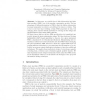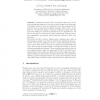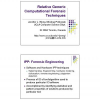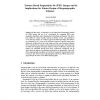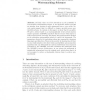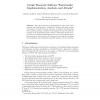IH
2004
Springer
14 years 7 months ago
2004
Springer
In this paper, we consider how to hide information into finite state machine (FSM), one of the popular computation models. The key advantage of hiding information in FSM is that t...
IH
2004
Springer
14 years 7 months ago
2004
Springer
IH
2004
Springer
14 years 7 months ago
2004
Springer
IH
2004
Springer
14 years 7 months ago
2004
Springer
IH
2004
Springer
14 years 7 months ago
2004
Springer
A digitally altered photograph, often leaving no visual clues of having been tampered with, can be indistinguishable from an authentic photograph. As a result, photographs no longe...
IH
2004
Springer
14 years 7 months ago
2004
Springer
We introduce a new dynamic technique for embedding robust software watermarks into a software program using thread contention. We show the technique to be resilient to many semanti...
IH
2004
Springer
14 years 7 months ago
2004
Springer
In this paper, we introduce a new feature-based steganalytic method for JPEG images and use it as a benchmark for comparing JPEG steganographic algorithms and evaluating their embe...
IH
2004
Springer
14 years 7 months ago
2004
Springer
Recently, there are active discussions on the possibility of non-invertible watermarking scheme. A non-invertible scheme prevents an attacker from deriving a valid watermark from a...
IH
2004
Springer
14 years 7 months ago
2004
Springer
Abstract. This paper presents an implementation of the novel watermarking method proposed by Venkatesan, Vazirani, and Sinha in their recent paper A Graph Theoretic Approach to Sof...
IH
2004
Springer
14 years 7 months ago
2004
Springer
Abstract. Existing navigation services, such as GPS, offer no signalintegrity (anti-spoof) protection for the general public, especially not with systems for remote attestation of...
